Natrix tessellata
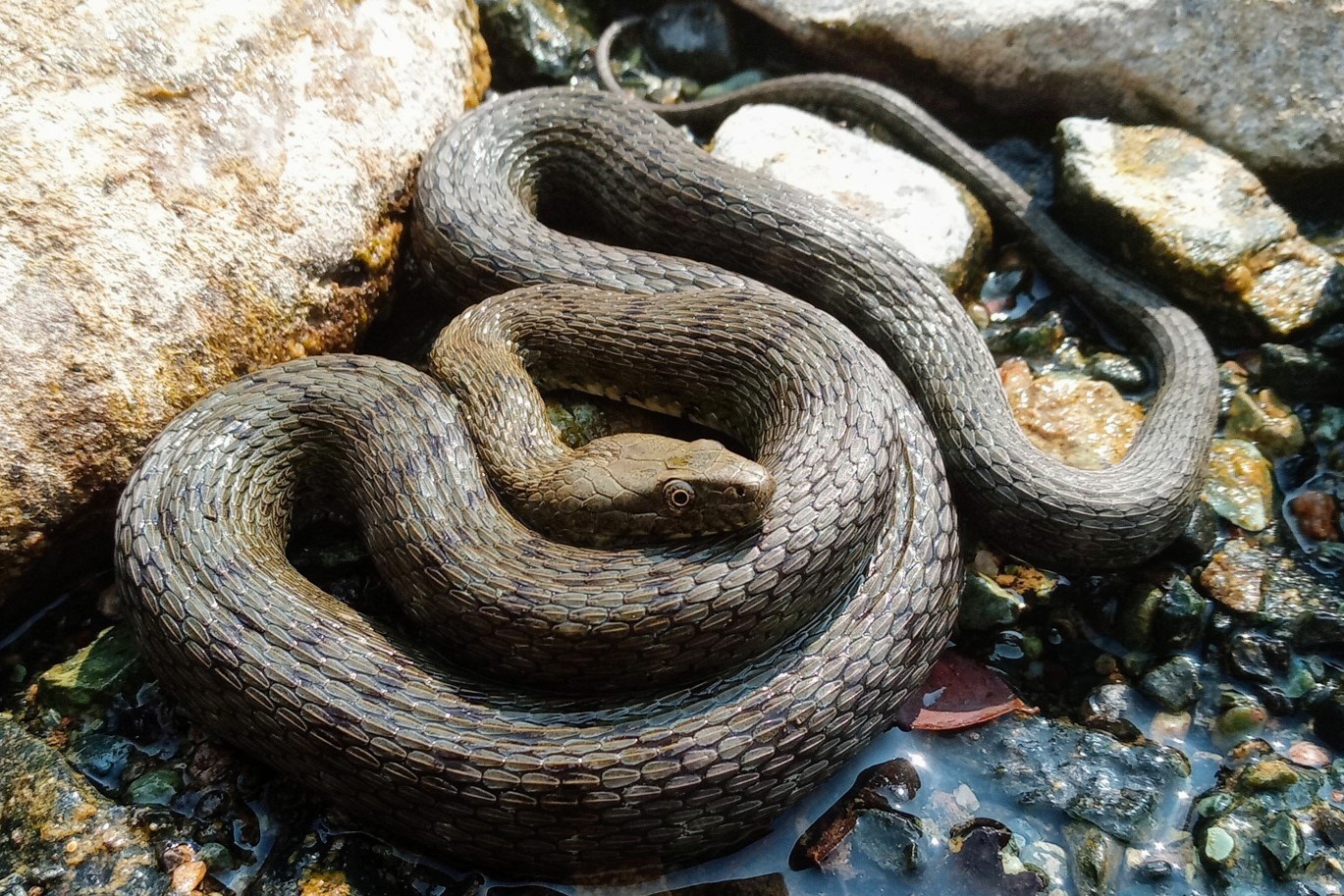

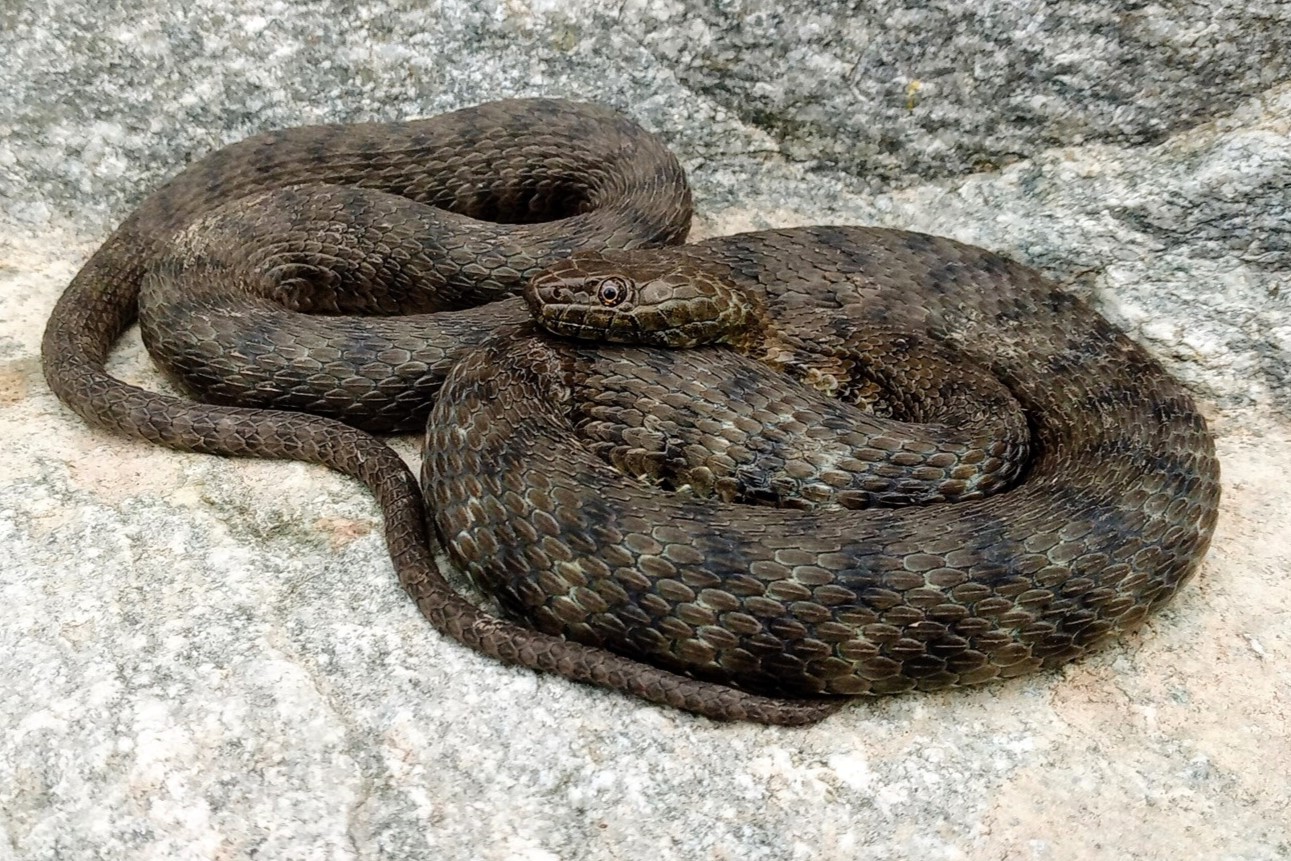
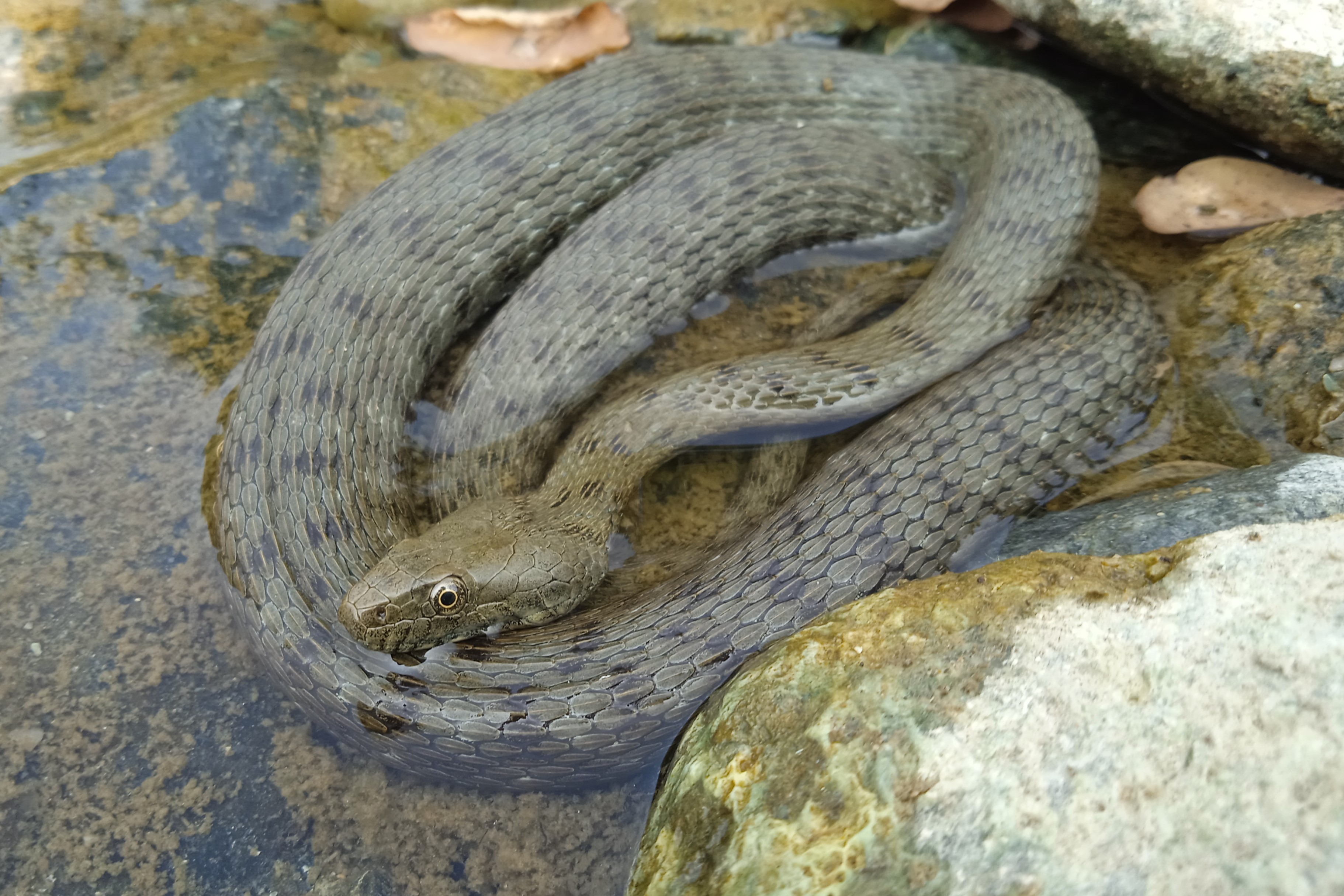
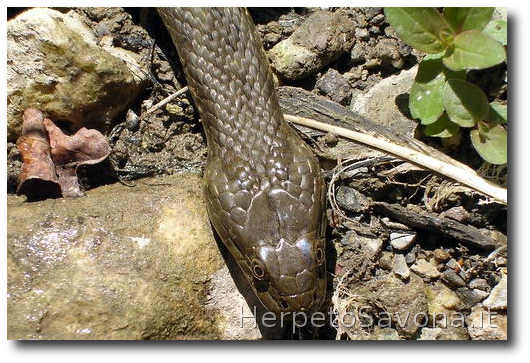

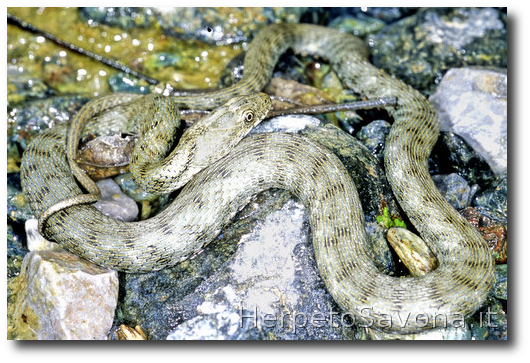
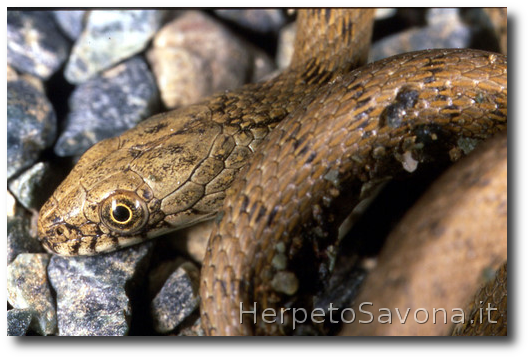
Reptilia → Squamata → Serpentes → Colubridae → Natrix → Natrix tessellata
Aspisurdu, Bagea, Biscia d'aegua, Biscia, Vespusùrdu
The Dice Snake ( Natrix tessellata ) is a medium-sized aquatic snake, robust and adapted to life near bodies of water. Adults have a length between 24 and 47 in (60 and 120 cm), with females generally longer and stouter than males. The head is elongated, pointed, and slightly flatter than that of other grass snakes; the eyes and nostrils are turned upwards to facilitate breathing while submerged. The pupil is round, and the iris is usually yellowish, sometimes with gray or brownish shades.
The moderately slender body ends in a long, barely differentiated tail. The back is covered with strongly keeled scales, smoother on the sides. Background color varies between gray, brown, olive, yellow, or reddish, often with numerous regularly arranged dark spots; a reverse “V”-shaped spot is often seen on the neck. Juveniles, just born, measure between 6 and 10 in (15 and 25 cm).
As often seen in this genus, the species has no venom and has aglyphous teeth, meaning there are no grooves or venom glands. Defensive behavior is usually elusive: the snake prefers to flee, or if disturbed, uses mimicry strategies such as fake biting, hissing, or thanatosis (playing dead).
The Dice Snake ( Natrix tessellata ) is widespread from southeastern Europe and the Balkans through Central Asia to North Africa (Nile basin). In Italy, its presence is broad but scattered, absent only in the Aosta Valley, Sardinia, and Sicily.
In the province of Savona and western Liguria, the species is found only on the northern slopes of the Ligurian Apennines, generally at elevations around 1,300 ft (400 m), in areas with ample water supply.
This colubrid prefers aquatic habitats, constantly frequenting streams, rivers, and brooks with medium to high flow and current, often where banks are vegetated. In other parts of its range, it may inhabit ponds, marshes, and bodies of stagnant or slow-moving water.
On a local scale, the Dice Snake mainly exploits clean watercourses rich in prey, while it avoids highly urbanized or polluted zones. Habitat use can vary with the season and food availability.
The Dice Snake is essentially diurnal and is remarkable for its excellent swimming ability. It can remain submerged for long periods and prefers to escape into the water at the first sign of danger; on land it moves slowly and is less agile. The annual activity cycle extends from March to October.
In spring, immediately after awakening, mating occurs and can last for about two months. In particularly favorable years, a second reproductive period may occur in autumn, shortly before the hibernation phase. Females lay between 4 and 35 eggs from late June to early July, choosing humid and protected areas, with hatching in August–September.
The diet is distinctly aquatic: the Dice Snake feeds almost exclusively on fish, amphibians (adults, larvae, and tadpoles), and aquatic invertebrates such as crustaceans and insects. Predation takes place underwater, with rapid movements; prey are swallowed alive. It rarely feeds on small mammals or terrestrial prey.
Natural predators include birds of prey, carnivorous mammals, and other snakes. The pike (Esox lucius) also plays a major role as a predator, attacking both juveniles and adults.
However, human activity is the main threat: the snake is often killed by mistake, being confused with venomous species such as the Common Viper ( Vipera aspis ). Water pollution, the reduction of wetland habitats, and the use of pesticides and herbicides deeply alter aquatic ecosystems, making the species vulnerable both directly and through diminishing food resources.
Like its congener, the Grass Snake ( Natrix helvetica ), the Dice Snake uses spectacular defensive strategies: it emits intense hisses and can secrete a foul-smelling liquid from its cloacal glands, a phenomenon that deters predators. In extreme situations, it plays dead (thanatosis), remaining motionless with mouth open and tongue extended. It has no venom and poses no danger to humans: attempts to bite are rare and generally ineffective.